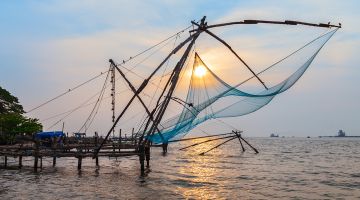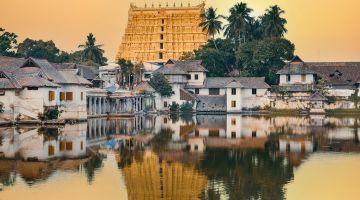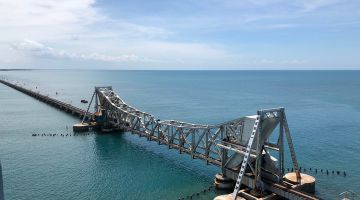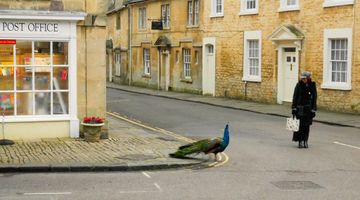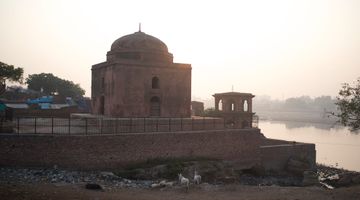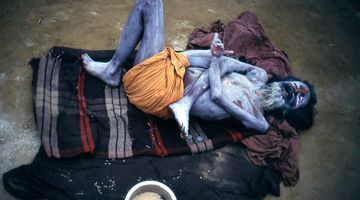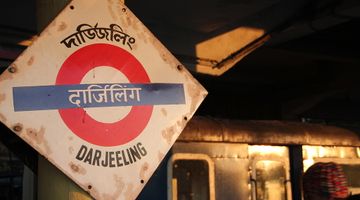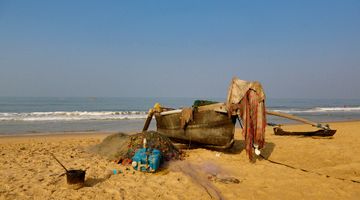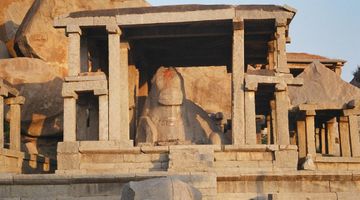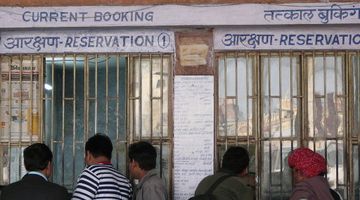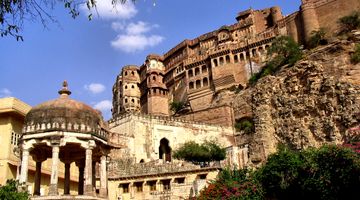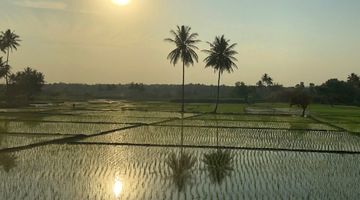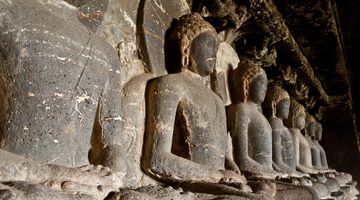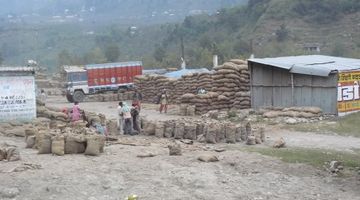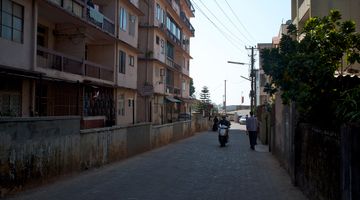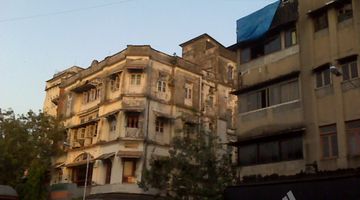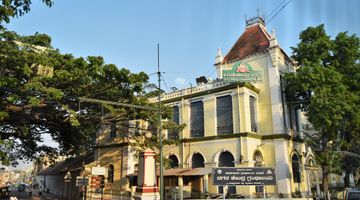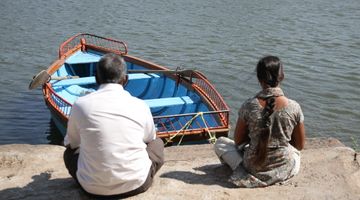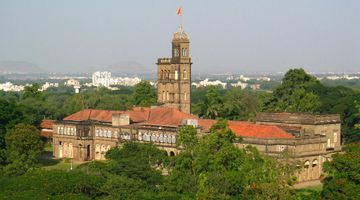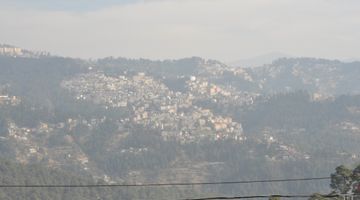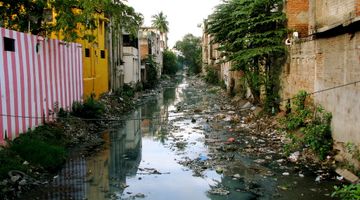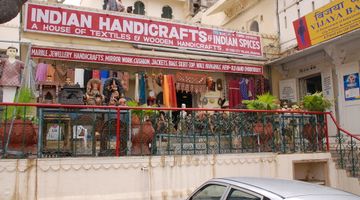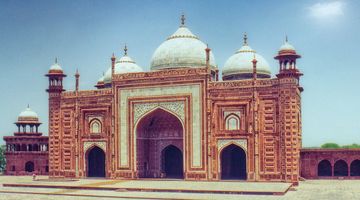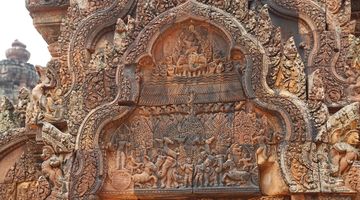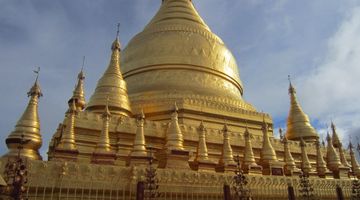Jaisalmer India – Your Quick Travel Guide
In a nutshell
The giant sandcastle of Jaisalmer looms large out of the Thar Desert, attracting adventure-seekers like a beacon. It might not be a big place, but Jaisalmer has a lot to offer visitors, such as camel-safaris, an ancient fort, and gloriously lavish havelis, so that once you get there you’ll understand why it’s one of India’s top tourist destinations.
Why go to Jaisalmer
Come to Jaisalmer to enter another world, a world of winding laneways and bazaars inside of Jaisalmer Fort, and where you can travel across sand dunes on camel back. It might sound romantic, but these are the biggest attractions of Jaisalmer, and though in reality they may be a little more touristy than they were 500 years ago, exploring Jaisalmer Fort and taking part in a camel safari are experiences you’ll never forget.
Jaisalmer Fort is the centre of Jaisalmer, and is still a working fort with part of the city living inside. This monolithic sandstone structure was constructed 800 years ago and is now a UNESCO World Heritage Site. We could spend hours strolling its winding laneways, which are filled with restaurants, handicrafts stores, and traditional dancers giving performances.
The premier attraction of Jaisalmer, of course, is the sand dunes. There are various sites around Jaisalmer to see the dunes, which are most picturesque at sunset, and you can visit for just a day, or multi-day trips. If you have the time, we’d definitely recommend a one or two-night safari, which should include a night on the dunes under the stars, and a night at a camp or village. For a camel safari that won’t break the bank, we’d recommend checking out Badal House in Khuri village. If you’re looking for something more on the ‘glamping’ end of the scale, Prince Desert Camp is always a favourite.
When to go
As Jaisalmer melts in 40 degree temperatures from April to August, these months are best avoided if you don’t like the heat.
From November to March is Jaisalmer’s ‘winter’, and at this time temperatures are ideal and skies are clear, though this is most definitely the most popular time for tourists.
Though September and October are technically monsoon, Jaisalmer receives very little rain, making it a nice time to visit if you don’t mind mild humidity.
Where to stay in Jaisalmer
There’s truly no shortage of accommodation options in Jaisalmer, and they range in cost from bargain budget, to mid-range, and even a few luxury options. We’d recommend trying to find somewhere as close to the fort as possible, as this is where the action happens, and there are even some places to stay inside the fort itself.
The Surya Paying Guesthouse provides some of the cheapest beds in town, whilst Hostel Fortside Jaisalmer is excellent value for money. One of the best options in the mid-range bracket is to stay at an old haveli which has been converted into a hotel. Hotel Pleasant Haveli and Moustache Jaisalmer are some of the nicest havelis we came across. You can expect large, regal rooms with intricately carved ceilings and doorways, usually decorated with traditional Rajasthani handicrafts and furniture.
Where to eat in Jaisalmer
One of the greatest pleasures of travelling is learning about the local cuisine and then getting to sample it. Not only does Rajashtan have its own unique cuisine, but there are many dishes that are served in Jaisalmer and nowhere else.
Rajasthani food is more heavily-spiced than in other regions, and there are some breads that you won’t find elsewhere, such as dal bhati choorma, which are balls of dough baked in a tandoor and used to mop up dal or other curries. Make sure to also sample ker sangri, which is a truly Jaisalmeri dish of desert beans and capers which you won’t find anywhere else.
Non-vegetarians absolutely can’t leave Rajasthan without trying laal maas, a fiery mutton curry in a yoghurt chilli sauce which is not for the faint of heart.
For atmospheric restaurants to try dishes like these, and which all have some international (usually Italian) dishes on the menu, we’d recommend Zoya Ka Zayeka, which has a homely feel, and Restaurant Romany, which has beautiful views of the fort illuminated at night.
How to get around Jaisalmer
As Jaisalmer is a fairly small place and most attractions are located within the same area, we’d recommend getting around on foot as you’ll come across all sorts of magical shops and street food on the way.
However, there are also plenty of autorickshaws that travellers can hail to take them anywhere around the city. This is a cheap and fast alternative to walking, but you shouldn’t be afraid to bargain with the driver. A rickshaw from the train station to the city centre (near the fort) should cost around INR 40.
The other option for getting around Jaisalmer, and to and from surrounding sand dunes, is to hire a car and a driver. This is easy to arrange, and can be done either from your hotel/hostel, or from a stand on Hanuman Circle Rd, near the post office. For a return trip from the major sand dune locations (Sam, Khuri etc.), including waiting time, you should expect to pay INR 1000-1500.
How to get to and from Jaisalmer
Though Jaisalmer is a town in the middle of the desert, it is surprisingly easy to reach.
By air
An airport connecting the town to the rest of India was built several years ago, yet has no domestic flights servicing it at the moment unless they’re private chartered flights.
However, the Jodhpur airport is the closest working airport nearby, and those wishing to reduce their travel time can fly into that airport and get a bus/train onwards to Jaisalmer. Other than by air, train and bus are the main ways to reach the city, which is relatively well-connected to the rest of the state.
By bus
Jaisalmer is roughly an 18-hour drive from Delhi, and as such there are little or no direct busses between the two cities. The best option to get straight from Delhi to Jaisalmer is to change busses in Jaipur.
Direct busses connect Jaisalmer to Bikaner (INR200, 5.5 hours), Ajmer (INR400, 9.5 hours) and Jodhpur (INR250, 5.5 hours). Government busses leave from the main bus stand, and tickets are available there or from travel agents.
Private busses, which are more comfortable and more expensive, also run between Jaisalmer and other major towns in Rajasthan. There are a number of authorised agents in town which can sell you tickets, including many around Hanuman Circle.
By train
Jaisalmer train station is to the east of the Fort, and connects Jaisalmer to other cities in Rajasthan as well as other states in India, including to New Delhi. Trains are a faster, cheaper, and in our opinion more comfortable way to travel.
Here are some of the main trains to help you get to and from Jaisalmer:
Bikaner – sleeper INR 200, 3AC INR 600, approximately six hours, two trains daily (1.10am and 11.55pm)
Jaipur – sleeper INR 350, 3AC INR 1000, approximately 12 hours, three daily (12.45am, 5.00pm, 11.55pm)
Delhi – sleeper INR 450, 3AC INR 1205, approximately 18 hours, three daily (12.45am, 1.10am, 5.00pm)
Jodhpur – sleeper INR 215, 3AC INR 565, approximately 5 hours, three daily (12.45am, 6.45am, 5.00pm)
By taxi
And of course, if you have the funds, it’s always possible to hire a taxi/car to drive you to other nearby destinations.
Is Jaisalmer a safe place to visit?
Jaisalmer is a small, safe and fun destination, without too many cars to watch out for. The major consideration for travellers is pickpockets, as Jaisalmer is primarily a tourist town. If you take a reasonable amount of care with your belongings, however, you should have a fantastic time!


